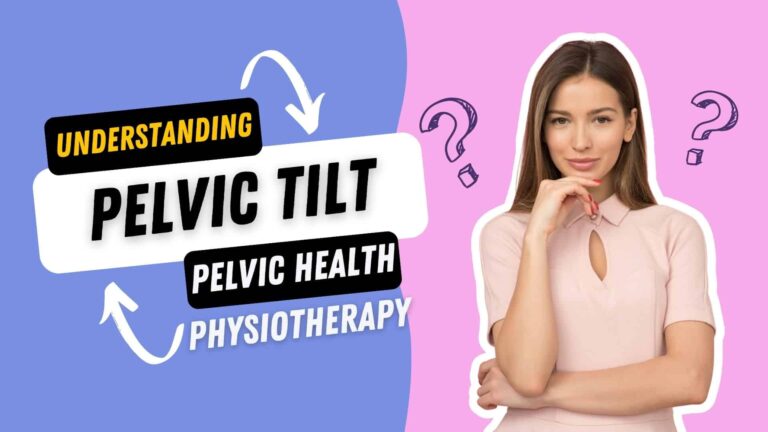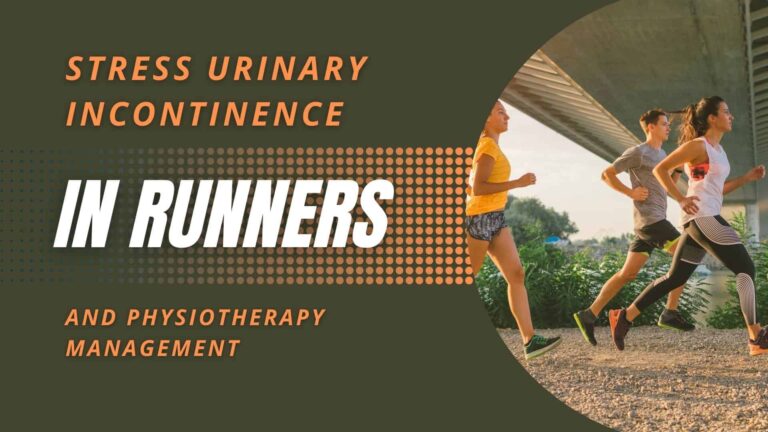10 Effective Ways to Relieve Pregnancy Back Pain: Expert Tips for Expectant Mothers
Expecting a baby is exciting, but the back pain that often comes with pregnancy? Not so much. As your body changes to make room for your growing little one, your back might complain and turn simple tasks into uncomfortable challenges. But don’t worry! You’re not alone; whether you’re in your first trimester or nearing the finish line, there are ways to ease the strain, reclaim comfort, and get back to enjoying your pregnancy journey.
Ready to wave goodbye to those pesky pains? In this guide, we’ll explore 10 effective ways to ease your aching back, allowing you to focus on the joy of your growing baby rather than the pain in your spine.
Interesting Fact: Did you know that 70% of pregnant women suffer from back pain? This fact shows how common it is for expectant moms to feel this discomfort. As your body changes to support your growing baby, your back may feel the strain.
Key Takeaways
- 70% of pregnant women experience back pain.
- Proper posture and supportive gear are crucial for prevention.
- Regular exercise and staying active are some of the best ways to relieve back pain.
- Prenatal massage can help reduce pain and stress.
- Sleeping on your side with support can alleviate discomfort.
- Consult a doctor or physiotherapist if back pain becomes severe or persistent.
- Pelvic floor physiotherapy highly beneficial for pregnant women experiencing back pain.

The nature and impact of pregnancy back pain
Understanding pregnancy back pain is crucial for expectant mothers, as it affects a significant majority of pregnant women. Back pain typically emerges in the second trimester and can persist or worsen throughout pregnancy. Knowing what causes back pain during pregnancy can also help you manage it better.
Back pain during pregnancy comes from hormonal shifts, particularly the release of relaxin and physical changes in posture and weight gain. As your baby grows, your body moves to balance the weight of your belly, putting strain on your back muscles. This pain often manifests in the lower back or pelvic area, ranging from mild discomfort to severe pain impacting daily activities.
While it’s a common symptom, severe or persistent back pain should be reported to a healthcare provider, especially when accompanied by other symptoms.
“Pregnancy back pain is a journey shared by many, rooted in the body’s remarkable adaptations. While common, it’s not to be ignored—understanding its causes empowers expectant mothers to find relief and embrace the changes with confidence.”
Fortunately, there are various strategies to manage and alleviate pregnancy-related back pain.
Here are the 10 effective ways to alleviate your aching back,

1. Practice good posture during pregnancy
During pregnancy, your body undergoes significant changes that can affect your posture. As your baby grows, your center of gravity shifts forward, which can lead to an increased curve in your lower back and strain on your back muscles. Good posture helps distribute your weight evenly, reducing stress on your spine and supporting muscles.
Standing posture:
When standing, follow these guidelines:
- Hold your head up straight with your chin slightly tucked in
- Pull your shoulder blades back and chest forward
- Maintain straight knees without locking them
- Tuck in your buttocks and pull your lower belly in and up as much as possible
- Distribute your weight evenly on both feet.
Sitting posture
Sitting ergonomically is also equally important. Pick a chair with strong back support to sit on during the pregnancy.
- Sit up with your back straight and shoulders back
- Ensure your buttocks touch the back of the chair
- Use a small rolled-up towel or lumbar roll for lower back support
- Keep your hips and knees at a right angle, using a footrest if necessary
- Avoid crossing your legs and keep your feet flat on the floor to keep blood flowing well
- Limit sitting in the same position for more than 30 minutes
- Ensure your computer screen or phone is at eye level when working at a desk to avoid strain on your neck or back.
Benefits of good posture
Maintaining proper posture throughout your pregnancy can:
- Reduce lower back and neck pain
- Decrease fatigue
- Improve balance and stability
- Promote better breathing and circulation
- Support your changing body as your baby grows
Remember, it may take some practice to maintain good posture consistently. Be patient with yourself, and consciously check and correct your posture intermittently during the day. Ask for posture correction help from experienced professionals if required. By prioritizing good posture during pregnancy, you can significantly reduce back pain and improve your comfort as you prepare for your baby’s arrival.
“Good posture is not just about looking confident; it’s about feeling comfortable and preventing future pain.”

2. Exercise regularly and stay active
Regular exercise is key to handling pregnancy back pain. The Centers for Disease Control and Prevention suggest at least 30 minutes of moderate exercise for 5 days a week during pregnancy. This helps strengthen your back muscles and ease pain.
Benefits of regular exercise for pregnancy back pain
Regular exercise during pregnancy offers several benefits specifically for back pain relief:
- Strengthens core and back muscles to better support the spine.
- Improves posture and body mechanics.
- Increases flexibility and range of motion.
- Promotes better circulation and reduces inflammation.
- Releases endorphins that act as natural pain relievers.
- Helps maintain a healthy weight, reducing strain on the back.
Safe and effective exercises during pregnancy
- Walking: A low-impact activity(1) that improves cardiovascular fitness and strengthens the back and core.
- Swimming: Provides excellent full-body exercise while reducing pressure on joints and the spine.
- Prenatal yoga: Improves posture and flexibility, strengthens muscles, and promotes relaxation.
- Stationary cycling: Offers cardiovascular benefits without putting stress on the joints.
- Pelvic tilts: Strengthen the pelvic floor, core and abdominal muscles and improve lower back muscle flexibility.
- Stretching: Gentle stretches can help alleviate muscle tension.

Exercise guidelines for pregnant women
When exercising, remember these guidelines: Always consult your healthcare provider before starting or continuing an exercise routine.
- Start slowly and gradually increase intensity and duration.
- Listen to your body and avoid overexertion.
- Stay hydrated and avoid exercising in hot, humid conditions.
- Wear supportive, comfortable shoes and clothing.
- Avoid exercises that involve lying flat on your back after the first trimester.
- Modify exercises as your pregnancy progresses to accommodate your changing body.
A study showed that exercises and following ergonomic tips can reduce low back and pelvic girdle pain in pregnant women.
Remember, while exercise is generally safe and beneficial during pregnancy(2), it’s essential to listen to your body and consult your healthcare provider about any concerns or unusual symptoms. By staying active and incorporating targeted exercises, many pregnant women find significant relief from back pain and enjoy a more comfortable pregnancy overall.
You may also be interested in: Dealing With Postpartum Back Pain: Tips For New Moms!.

3. Use heat, cold, or massage
Pain relief techniques can really help when you’re dealing with back pain during pregnancy.
Heat therapy
Heating pads, warm compresses, or warm baths can help relax tense back muscles and increase blood flow to the area.
- Use a warm towel or heat pad for 15-20 minutes at a time in low or medium settings.
- Avoid applying heat directly to the belly.
- Don’t use heat for prolonged periods or while sleeping.
- Try a warm bath to soothe aching muscles.
- Heat is generally safe when used properly, but consult your doctor first.
Cold Therapy
Ice packs or cold compresses can help reduce inflammation and numb pain.
- Apply cold for 10-15 minutes at a time.
- Always wrap ice packs in a thin towel to protect your skin.
- Please note that cold therapy may be less effective than heat for pregnancy back pain.
Massage
Prenatal massage is a great way to ease back pain during pregnancy and can help loosen tight muscles and provide relaxation.
- Have massages done by a professional trained in prenatal techniques.
- Gentle self-massage or partner massage may also provide relief.
“In the journey of pregnancy, heat, cold, and gentle hands become powerful allies against back pain. These simple yet effective remedies offer comfort, allowing expectant mothers to embrace each moment with greater ease and joy.”
General tips on using heat, cold, or massage
- Alternate between heat and cold to see which provides more relief.
- Combine these methods with proper posture, supportive shoes, and pregnancy-safe exercises.
- Stop use and consult your doctor if you experience increased pain or discomfort.
- These methods are generally safe, but always check with your healthcare provider before trying new pain relief techniques during pregnancy.
- They can tell you the safest and most effective methods for your situation.

4. Sleeping positions
Finding a comfy way to sleep during pregnancy can be tough. Adjusting your sleeping position becomes crucial as your pregnancy progresses.
- Sleep on your side, preferably the left side, to improve blood flow and ease swelling in your hands, feet, and ankles.
- Place a pillow between your knees to align your hips.
- For support, use additional pillows under your abdomen and behind your back. Pregnancy pillows and full-length body pillows are excellent for all-around support.
- Avoid lying flat on your back, especially in the third trimester.
- Sleep on a firm mattress to keep your spine in line.
- Keep your room cool and dark for better sleep, and stick to a regular sleep schedule.
While sleeping on your left side is often advised, a 2019 study found no higher risk of stillbirth, reduced size at birth, or high blood pressure disorders during pregnancy when back sleeping or right side sleeping for up to 30 weeks. Always talk to your healthcare provider for advice on the best sleep positions for you and your baby.

5. Wear supportive shoes and clothing
Supportive shoes for pregnancy
Your feet change during pregnancy. They swell because of more blood flow and might grow longer or wider. It’s important to pick the right shoes for your comfort and back health.
- Low-heeled shoes: Opt for shoes with low, wide heels (not flat) that provide good arch support. High heels can shift your balance forward and increase strain on your back muscles.
- Walking or athletic shoes: These are excellent choices as they typically offer good support and cushioning.
- Proper fit: Ensure about ½-inch of space from the tip of the shoe to your longest toe. Avoid shoes that bind or restrict your feet, and find a shoe with cushion for comfort.
- Wide toe box: Look for shoes with a square or rounded toe box for comfort and good arch support.
- Breathable materials: Choose shoes made from mesh or natural fibres to help keep your feet cool and prevent swelling.
- Slip-on styles: As your pregnancy progresses, slip-on shoes become more convenient and comfortable.
Tip: Try shoes on at the end of the day when your feet are most swollen. Avoid stilettos and flip-flops, which don’t offer enough support. Consider using orthotic insoles for extra comfort.
Supportive clothing for pregnancy
The right clothing can also ease back pain. Maternity support garments are key to pregnancy fashion and back pain.
- Maternity support belts: These can help distribute the weight of your growing belly more evenly, reducing strain on your back and pubic bone.
- Abdominal support garments, also known as belly bands or pregnancy binders, can relieve some weight from your back muscles.
- Maternity pants with support: Some maternity pants come with built-in elastic bands that help support your belly weight.
- Pelvic support belts: While research on their effectiveness is mixed, some pregnant women find these helpful for additional support.
Additional tips on shoes and clothing
- Gradually adjust: If you’re switching to a new type of supportive shoe (like barefoot shoes), start slowly and gradually increase wear time.
- Consider custom orthotics: Custom orthotics might be beneficial if you have specific foot issues. Consult with your healthcare provider.
- Rotate shoes: Having multiple pairs of supportive shoes can help, especially if your feet swell throughout the day.
- Adjust as needed: Your feet may change during pregnancy, so be prepared to adjust your shoe size if necessary.
These items spread out your weight and lessen the strain on your lower back. Your comfort is most important, so spend on good maternity wear that supports your changing body during pregnancy.
“In the journey of pregnancy, your feet and body carry precious cargo. Embrace supportive shoes and clothing as silent guardians, offering comfort with every step and easing the path to motherhood.”

6. Practice proper lifting techniques
Your body changes a lot during pregnancy. About 50-60% of pregnant women feel back pain. It’s important to lift safely to avoid injuries.
To lift safely, follow these tips:
- Maintain a wide stance for stability
- Bend at your knees, not your waist
- Keep your back straight
- Use your leg and buttock muscles to lift
- Exhale while lifting to reduce pelvic floor stress
- Hold objects close to your body when carrying them
- Push rather than pull heavy objects
“Proper lifting techniques can significantly reduce the risk of back injury and pain during pregnancy.”
If you have back pain and lifting or carrying your toddler gets hard, talk to a pelvic physical therapist. They can advise on safe lifting and help ease your pregnancy discomfort.

7. Complementary therapies
Many pregnant women find relief from back pain and improved overall comfort by trying complementary therapies under proper guidance. However, it’s crucial to approach these options with caution and in consultation with your healthcare team to ensure the safety of both mother and baby.
Here’s an overview of some popular complementary therapies and their potential benefits.
Massage therapy
Prenatal massage is one of the most commonly used complementary therapies for pregnancy-related back pain. Studies have shown that massage can help reduce pain intensity when compared to usual care or relaxation techniques. Massage may help by:
- Relaxing tense and sore muscles
- Improving blood flow
- Reducing stress and anxiety
Acupuncture
Acupuncture is increasingly used during pregnancy for various conditions, including back pain. While more research is needed, some studies suggest acupuncture may be beneficial.
- A systematic review found that acupuncture appears to be associated with few adverse events when correctly applied during pregnancy.
- In comparison, some clinical trials done in 2023 study indicate that acupuncture may improve pregnancy-related pelvic pain.
- While acupuncture is generally considered safe, there are potential risks associated with the treatment. Always talk to your healthcare provider before trying new treatments.
Chiropractic care
Chiropractic adjustments are generally considered safe during pregnancy when performed by a qualified practitioner. About 75% of pregnant patients reported pain relief in one collaborative study.
Chiropractic care may help realign the spine and pelvis, potentially reducing back pain.
It’s important to consult your doctor before seeking chiropractic care and ensure you choose a chiropractor experienced in treating pregnant women.
Osteopathic therapy
Osteopathic treatments have shown some promise in managing pregnancy-related back pain.
Meta-analyses found positive effects for manual therapy, including osteopathic therapy, on pain intensity compared to usual care.
Other complementary approaches
Aromatherapy: Some women find relief by using essential oils in warm compresses
Reflexology: While more research is needed, some studies have explored its potential benefits for pregnancy-related low back pain.
“In the pregnancy care, complementary therapies weave threads of relief and comfort. These approaches offer expectant mothers a holistic path to ease back pain, nurturing both body and spirit on the journey to motherhood.”
Important considerations
- Always consult your healthcare provider before trying any new therapy during pregnancy.
- Choose practitioners who are experienced in treating pregnant women.
- Be aware that while these therapies show promise, the evidence is still limited for some approaches.
- Complementary therapies should be used alongside, not as a replacement for, conventional prenatal care.
- Some treatments might not be safe for high-risk pregnancies or certain health issues.

8. Strengthen your core to ease back pain during pregnancy
A strong core is key to easing pregnancy back pain. Your core consists of more than just abdominal muscles. It includes the transverse abdominis (the deepest abdominal layer), rectus abdominis (the “six-pack” muscles), obliques (side abdominals), back muscles, pelvic floor muscles, and diaphragm.
Maintaining a strong core throughout pregnancy offers several advantages.
- Reduces lower back pain and discomfort
- Improves posture and balance
- Supports pelvic organs as your baby grows
- Aids in postpartum recovery
Safe core exercises for pregnancy
Always consult your healthcare provider before starting any exercise routine. Here are some safe core exercises for pregnancy.
- Transverse abdominis breathing: Focuses on deep core muscles and pelvic floor.
- Glute bridge: Strengthens lower back and glutes while engaging core.
- Quadruped exercises: Exercises performed on hands and knees as the pregnancy progresses.
- Pelvic tilts: Helps relieve back pain and strengthens deep core muscles.
- Cat-cow stretch: Improves spine flexibility and core strength.
Precautions and modifications
- Avoid exercises that involve lying flat on your back after the first trimester.
- Skip full sit-ups, crunches, and double-leg lifts.
- Listen to your body and stop if you feel discomfort.
- Watch for signs of diastasis recti (abdominal bulging or coming).
Frequency and intensity
Aim for core strengthening exercises 2-3 times per week. Start with 8-10 repetitions and gradually increase as comfortable. Remember, the goal during pregnancy is to maintain strength, not necessarily to increase it.
While core strengthening can be beneficial, it’s important to approach it safely and under professional guidance. A strong core can contribute to a more comfortable pregnancy and potentially easier recovery postpartum. However, every pregnancy is unique, so always prioritize your comfort and follow your healthcare provider’s recommendations

9. Manage stress during pregnancy
Stress during pregnancy can worsen back pain and lead to other health problems. It is important to learn how to manage stress for your and your baby’s health.
Relaxation techniques can help ease muscle tension and make you feel calmer.
- Deep breathing exercises
- Prenatal yoga
- Meditation or mindfulness practices can make you more tolerant of pain, which is also helpful during pregnancy and labour.
- Gentle stretching
“Taking time for yourself to relax and unwind is not selfish – it’s essential for a healthy pregnancy.”
Don’t hesitate to talk to your healthcare provider if you’re feeling too stressed. They can offer more support and resources to help you manage stress well.

10. Pelvic floor physiotherapy
Pelvic floor physiotherapy can be highly beneficial for pregnant women experiencing back pain. This specialized therapy focuses on strengthening and relaxing the pelvic floor muscles, which play a crucial role in supporting the spine and pelvic organs.
Key benefits of physiotherapy for pregnancy back pain include
- Reducing lower back and pelvic pain
- Improving posture and balance
- Preparing muscles for labour and delivery
- Potentially reduces the risk of tearing during childbirth
- Decreasing the risk of urinary incontinence
- Aids in postpartum recovery
A pelvic floor physiotherapist can help with
- Assessment of pelvic floor function
- Education on proper muscle engagement
- Customized pelvic floor and core exercise programs
- Teach breathing and relaxation techniques
- Manual therapy techniques
- Prepare you for labour and delivery
- Perineal massage instruction to prepare for childbirth
When to start pelvic floor physiotherapy for pregnancy back pain
It’s recommended that pelvic floor physiotherapy be started as early as possible in pregnancy, ideally in the first trimester. However, it’s never too late to begin; many women find benefits even when starting later in pregnancy. The therapy continues to be valuable in postpartum, aiding in recovery and addressing any lingering issues.
When performed by a qualified professional, this pelvic therapy can significantly contribute to a more comfortable pregnancy and potentially easier labour and recovery.
“Pelvic floor physiotherapy is the unsung hero of pregnancy wellness, silently strengthening the foundation of maternal health. It not only eases the burden of back pain but also paves the way for a more comfortable journey from pregnancy to motherhood.”

Conquering pregnancy back pain safely and effectively
Remember, every pregnancy is unique, and what works best may vary from person to person. It’s essential to listen to your body and consult with your healthcare provider before starting any new pain relief methods or exercise routines.
Don’t give up if you’re having pregnancy back pain. There are ways to feel better. Keep trying, and soon you’ll find what works for you. This way, you can focus on the exciting parts of pregnancy and getting ready to meet your new baby.
Always talk to your healthcare provider before trying new ways to relieve pain. They can suggest safe and effective solutions. You also take the best care of your baby by taking care of yourself. Embrace this time, and know that a more comfortable pregnancy experience is possible.
Take the First Step Towards a Pain-Free Pregnancy!
Don’t let back pain overshadow the joy of your pregnancy journey. Our specialized pregnancy and postpartum physiotherapy services in Langley are designed to provide you with personalized care and expert guidance.
Book your consultation today and experience the difference that professional physiotherapy can make in your comfort and well-being. Call us at 604-532-7887 to schedule your appointment. Your body and your baby deserve the best care – let us help you achieve a more comfortable pregnancy and smoother postpartum recovery!

Cynthia Pathipati – Registered Physiotherapist
Cynthia Pathipati completed her bachelor’s in physiotherapy and is a qualified Registered Physiotherapist in good standing with the College of Physiotherapists of BC with more than 15 yrs of experience. She has Post-Graduate Credentials and Certifications as well as extensive knowledge experience in treating pelvic floor, orthopedic, neurological, vestibular and pain conditions.







